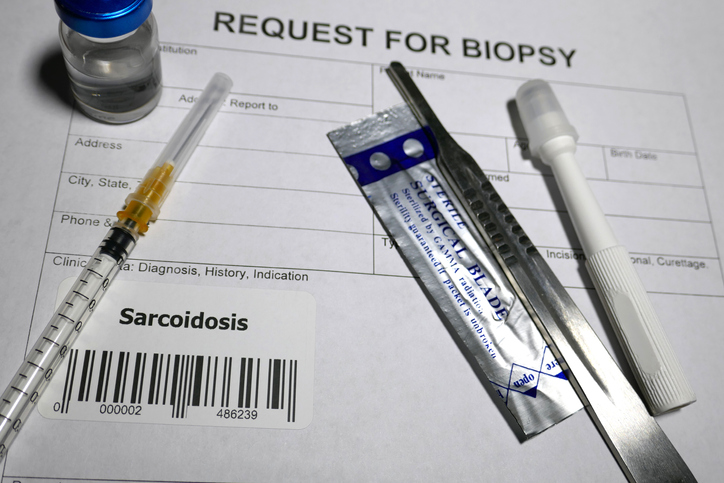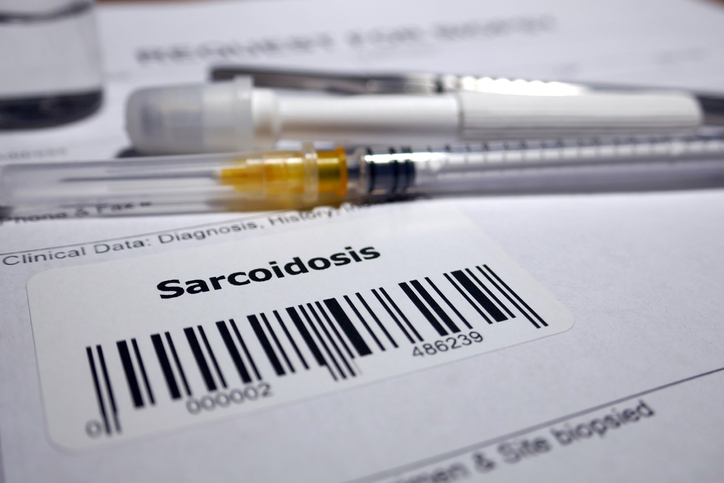Pain
What Is Sarcoidosis?

Sarcoidosis is an inflammatory disease characterized by the formation of small collections of inflammatory cells (granulomas) in one or more organs. These growths most commonly form in the lungs and lymph nodes, but they can also develop in the skin, eyes, musculoskeletal system, nervous system, heart, liver, or kidneys.
Phases
Sarcoidosis progresses at the cellular level. Inflammation occurs, and then granulomas begin to form. Granulomas are masses or nodules of chronically inflamed tissues. This occurs as the body tries to “wall off” or isolate items that are difficult for the body’s immune system to fight. Fibrosis (scarring of tissues or organs) is the final stage of the disease.
Some individuals with sarcoidosis advance through all of these phases sequentially while others experience multiple phases simultaneously. Granulomas can heal on their own or progress to irreversible scarring.
Symptoms
As sarcoidosis can affect multiple organs and systems of the body, the symptoms widely vary from person to person. Some individuals with sarcoidosis never experience symptoms and are not aware that they have sarcoidosis. The symptoms of sarcoidosis can be both generalized and specific to individual organ systems.
Examples of general symptoms include fatigue, fever, swollen lymph nodes, weight loss, joint pain and swelling, dry mouth, nose bleeds, or abdominal swelling. Symptoms specific to individual organs include the following:
Lungs
- Chest pain
- Shortness of breath
- Wheezing
- Persistent dry cough
Skin
- Erythema nodosum (skin condition marked by tender, painful, or reddish bumps/patches on the skin)
- Lupus pernio (skin condition marked by purple-colored, hardened lesions on the cheeks, lips, nose and ears)
- Skin sores and/or skin plaque
- Hair loss
- Skin patches (with or without color)
- Growths under the skin
- Raised scars
Eyes
- Dry, itchy, or burning eyes
- Blurred vision or vision loss
- Eye pain
- Teary eyes
- Sensitivity to light
- Severe redness
Heart
- Chest pain
- Shortness of breath
- Fainting
- Irregular heart beats or palpitations
- Swelling (caused by excess fluid)
Musculoskeletal system
- Muscle discomfort or pain
- Bone structure changes
- Joint inflammation
Nervous system
- Headaches
- Seizures
- Hearing loss
- Muscle weakness
- Pain and numbing or tingling sensations in the face, arms or legs
- Small fiber neuropathy
Other symptoms
- Liver disease or cirrhosis of the liver
- Hypercalcemia
- Hypopituitarism
- Male infertility or erectile dysfunction
- Deficiencies in the amount of certain blood cells
- Depression
- Sleep apnea
Causes
The exact cause of sarcoidosis is unknown, but there does appear to be a genetic component. Experts believe that it may be caused by an abnormal immune response, but it’s unknown what foreign substance triggers the response. Foreign substances such as fungi, bacteria, and chemical or dust particles are believed to be possible triggers.
Risk factors
- Age
Sarcoidosis is most likely to develop between 20 and 60 years old. - Gender
Sarcoidosis is slightly more common in women than men. - Race and geographical location
African-Americans, natives of Martinque living in France, and Irish immigrants in London are at higher risk of developing the condition. - Occupation
Sarcoidosis is reported at a higher rate in health care workers, firefighters, and naval aircraft servicemen in the United States. - Genetics
People with a family history of sarcoidosis have a significantly higher risk of getting the disease. The presence of sarcoidosis in a first or second degree relative increases the risk of developing the condition by 5 times.














